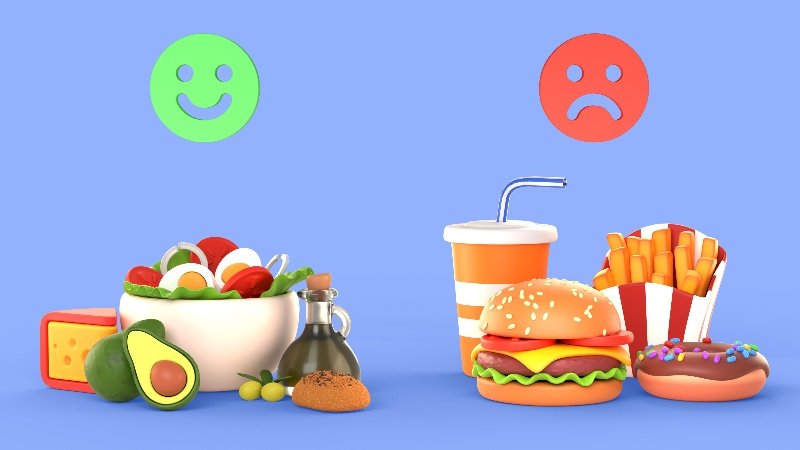Achieving weight loss is one of the most pursued health goals internationally. Whether it’s for better health, improved confidence, or preventing chronic disease, nutrition plays a central role. Exercise matters for fitness and strength, but when it comes to shedding excess Fat, what you eat every day is the most potent factor.
Unfortunately, there’s a lot of confusion around nutrition. Diet trends, celebrity programs, and quick-fix solutions often make people feel frustrated and overwhelmed. The truth is simple: sustainable weight loss comes from balanced nutrition, portion control, and consistency.
Why Nutrition Matters More Than Exercise for Weight Loss
Many people assume they need hours in the gym to lose weight. While exercise is great for building muscle and improving overall health, studies show that 70–80% of weight loss depends on diet choices (NIH).
Here’s why nutrition matters more:
- Calories in vs. calories out: It’s easier to reduce 500 calories by skipping soda than by running for 60 minutes.
- Hunger control: Certain foods (protein, fibre) keep you full, while others (sugar, refined carbs) trigger cravings.
- Metabolism: Nutrient-dense foods help your body burn calories more efficiently.
What to Eat for Weight Loss
1. Protein – The Foundation of Fat Loss
When it comes to weight loss, protein is the key nutrient your body needs most. It reduces appetite, boosts metabolism, and preserves muscle.
Sources of lean protein:
- Animal: chicken breast, turkey, eggs, fish, lean beef.
- Plant-based: lentils, chickpeas, beans, tofu, tempeh, quinoa.
- Dairy: Greek yoghurt, cottage cheese.
Studies show that people who eat 25–30% of their calories from protein lose more weight and keep it off longer (Harvard Health).
2. Fibre – Your Natural Appetite Suppressant
Fibre slows digestion and helps regulate blood sugar. It helps make meals feel fuller without significantly increasing calories.
High-fibre foods:
- Vegetables: broccoli, spinach, kale, carrots.
- Fruits: apples, pears, berries, oranges.
- Whole grains: oats, brown rice, quinoa, barley.
- Legumes: beans, lentils, peas.
People who eat at least 25–30 grams of fibre daily tend to weigh less and feel fuller longer (CDC).
3. Healthy Fats – Eat Fat to Lose Fat
Not all fats are bad. Your body needs healthy fats to balance hormones, control hunger, and absorb essential nutrients.
Best sources of healthy fats:
- Avocados.
- Olive oil and nuts.
- Fatty fish (salmon, sardines, mackerel).
- Seeds (chia, flax, sunflower).
Limit saturated fats (butter, cream, fatty meats) and avoid trans fats (fried foods, margarine, packaged snacks).
4. Complex Carbohydrates – Smart Energy Choices
Carbs are not the enemy. The key is choosing slow-digesting carbs that give steady energy without spiking blood sugar.
Good carbs to include:
- Whole grains (brown rice, oats, quinoa).
- Sweet potatoes.
- Vegetables and legumes.
Carbs to limit/avoid:
- White bread, white rice, pastries, sugary cereals.
5. Low-Calorie, Nutrient-Dense Foods
These foods provide volume and nutrients while keeping calories low—great for portion control.
- Leafy greens (spinach, kale, lettuce).
- Cucumbers, zucchini, celery.
- Mushrooms, cauliflower, peppers.
What to Avoid for Weight Loss
1. Sugary Drinks
Liquid calories add up quickly. Soda, fruit juices, and fancy coffees contain 200–400 calories per serving with almost no nutrition.
Example: 1 can of soda daily = 150 calories. That’s 54,750 calories a year (about 7.8 kg of fat gain).
2. Highly Processed Foods
Chips, cookies, pastries, and packaged snacks are high in sugar, salt, and unhealthy fats. They trigger overeating by bypassing natural hunger signals.
3. Refined Carbohydrates
White bread, pasta, and sweets digest quickly, leading to energy crashes and increased cravings.
4. High-Calorie Sauces & Dressings
Creamy sauces, mayonnaise, and cheese dressings add hundreds of hidden calories. Swap them for yoghurt-based dips, lemon juice, or olive oil.
Data: Food Choices and Weight Loss
| Food Category | Effect on Weight | Notes |
|---|---|---|
| Lean protein | Helps lose fat | Preserves muscle |
| Fiber-rich foods | Helps curb hunger | Best from plants |
| Sugary drinks | Causes weight gain | No satiety value |
| Processed snacks | Increases cravings | High calorie density |
| Healthy fats | Supports satiety | Eat in moderation |
| Refined carbs | Spikes hunger | Choose whole grains instead |
Sources: CDC, Harvard Nutrition
Portion Control – The Secret to Sustainable Weight Loss
Even healthy foods can make you gain weight if eaten in excess. Portion control is key.
Simple methods:
- The plate method: ½ plate vegetables, ¼ protein, ¼ whole grains.
- Hand guide: Protein = palm size, Carbs = fist, Fats = thumb.
- Mindful eating: Eat slowly; it takes 20 minutes for your brain to register fullness.
Meal Timing: Does It Matter?
Some studies suggest that when you eat may affect weight loss.
- Intermittent fasting (16:8): Eating within an 8-hour window can reduce calories naturally.
- Front-loading calories: Eating more at breakfast/lunch and less at dinner may help metabolism.
- Avoid late-night snacking: These calories are often processed carbs and fats.
Examples
- Case Study 1 – The Soda Swap: A woman cut out two sodas daily, saving 300 calories/day. In 3 months, she lost 5 kg without other changes.
- Case Study 2 – Protein Breakfast: A man switched from sugary cereal to eggs + oats. He reported less hunger at lunch and lost 8 kg in 4 months.
- Case Study 3 – Fibre Boost: A patient added 2 cups of vegetables to dinner. Without reducing other foods, she lost 4 kg in 10 weeks due to reduced snacking.
Practical Tips for Success
- Plan meals to avoid unhealthy choices.
- Drink at least eight glasses of water daily.
- Cook at home to control ingredients.
- Limit alcohol—it adds empty calories.
- Don’t completely ban favourite foods; enjoy small portions occasionally.
Sample 1-Day Weight Loss Meal Plan
| Meal | Example | Calories (approx.) |
|---|---|---|
| Breakfast | 2 boiled eggs + 1 slice whole-grain toast + ½ avocado | 350 |
| Snack | Greek yogurt with berries | 200 |
| Lunch | Grilled chicken salad with olive oil dressing | 450 |
| Snack | Apple + handful of almonds | 200 |
| Dinner | Baked salmon + steamed broccoli + quinoa | 500 |
| Total | Balanced day | ~1,700 |
Final Thoughts
Weight loss isn’t about eating less—it’s about eating right. By focusing on lean protein, high fibre, healthy fats, and whole grains, while cutting down on sugary drinks and processed foods, you can achieve steady, lasting results.
Remember: Consistency beats perfection. Small, daily changes add up to significant results over time.
For trusted resources:
- CDC – Healthy Eating for Weight Loss
- Harvard Nutrition Source
- NIH – Nutrition and Weight Management

